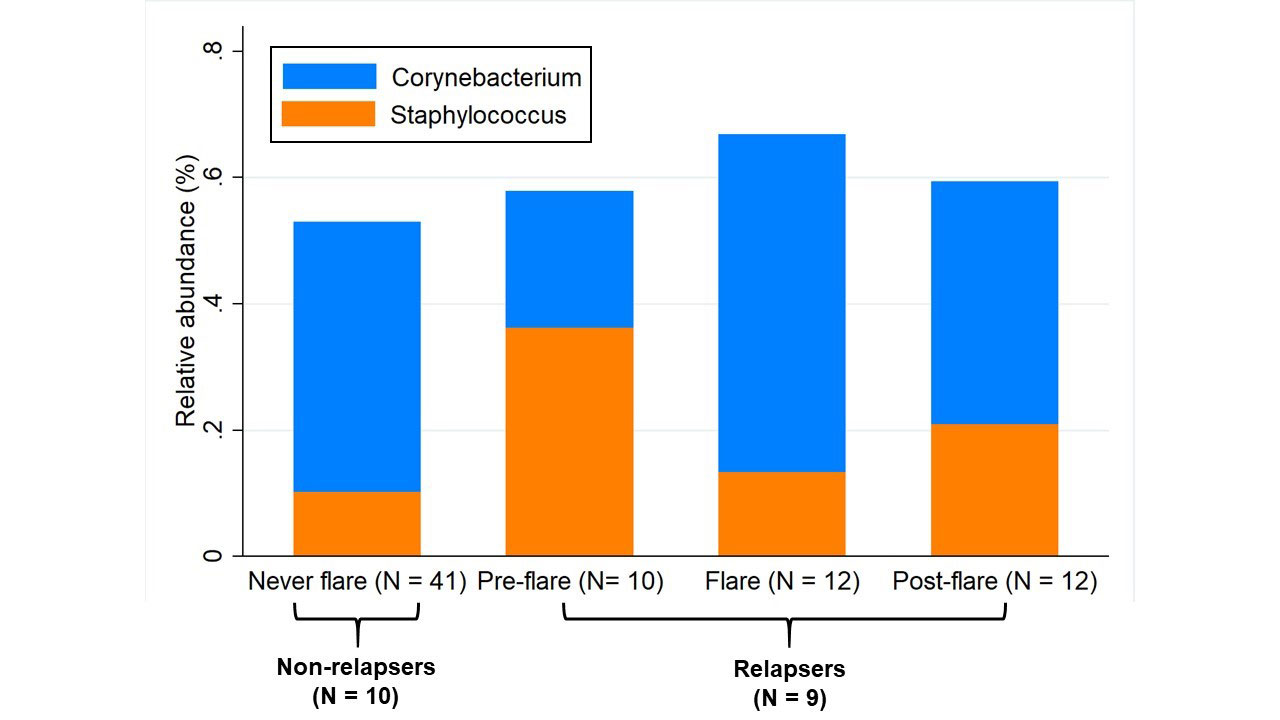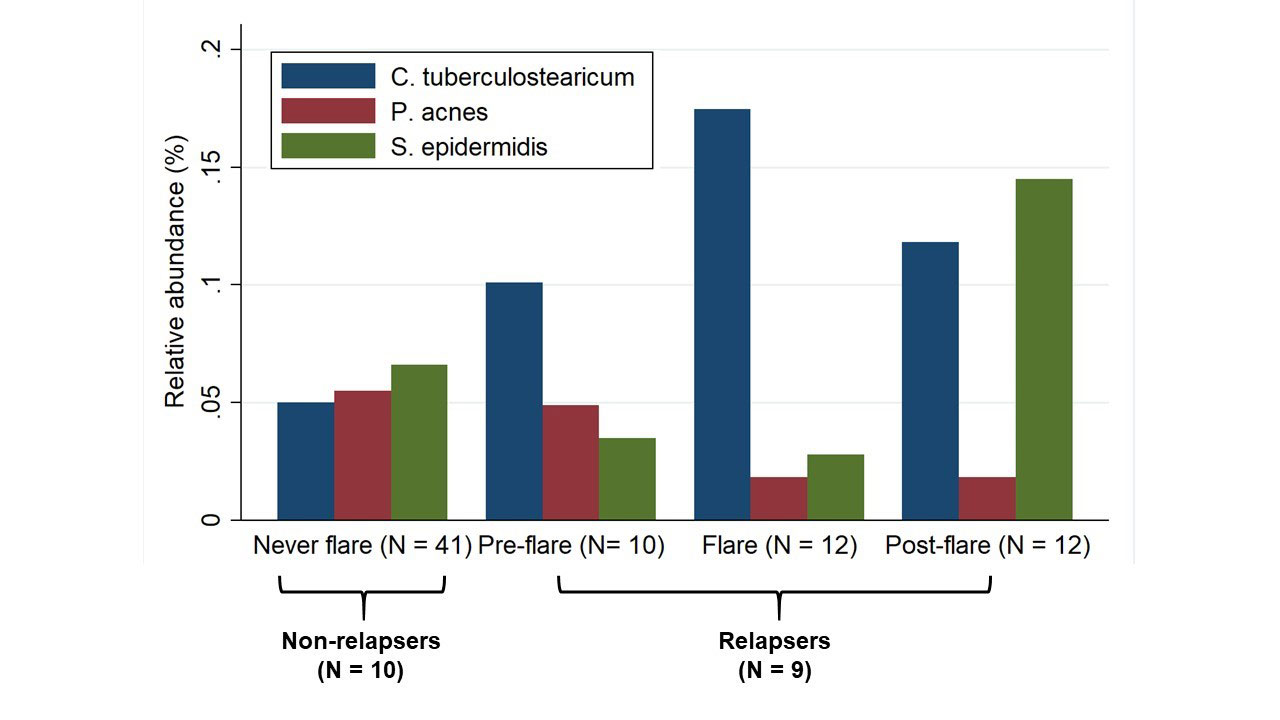Session Information
Session Type: ACR Abstract Session
Session Time: 2:30PM-4:00PM
Background/Purpose: Microbial organisms have been theorized to contribute to disease activity in granulomatosis with polyangiitis (GPA) but little is known about what changes occur in commensal microbes in association with disease relapse. This longitudinal study examined compositional changes in the nasal microbiome and its association with disease activity in patients with GPA. We hypothesized that the overgrowth of pathogenic bacteria in the nasal cavity is associated with local and systemic disease activity (or flare).
Methods: Nasal bacterial composition was examined using 16S rRNA gene sequencing of DNA obtained from nasal swabs of 19 patients with GPA who were followed longitudinally (approximately every 3 months) for a total of 78 visits. Nine patients had at least 1 visit with a flare visit and 10 patients remained in remission during follow-up. Disease activity was determined by BVAS/WG. The main variables of interest were the relative abundance of the 5 most abundant taxa (or bacterial genera) as well as ratios between these taxa (to understand potential interactions between bacteria). As opposed to genus-level comparisons, species-level assignment was predicted based on the 16S gene (R package Unassigner) since bacterial interactions and effects can be specific to a particular species. Linear mixed effects models evaluated the association between bacteria and disease activity, accounting for repeated measures within an individual. Models adjusted for use of antibiotic and immunosuppressive medications, and sinus irrigation.
Results: Among the 19 patients enrolled, 10 patients never relapsed while 9 patients had 12 flares during follow-up. Of the 12 flare visits, 8 had clinically-identifiable sinonasal involvement and only 1 flare visit was a patient receiving full-dose trimethoprim-sulfamethoxazole. Corynebacterium, Propionibacterium, Staphylococcus, Alloiococcus, and Streptococcus were the most abundant bacterial genera in the samples. A higher ratio of the bacterial genera Staphylococcus to Corynebacterium occurred at the visit prior to flare, even after adjusting for medications and sinus irrigation (P < 0.01; Figure 1). Higher resolution species-level examination found Corynebacterium tuberculostearicum was associated with disease activity while other nasal commensals, such as Propionibacterium acnes and Staphylococcus epidermidis, decreased during flare (P = 0.04; Figure 2).
Conclusion: In patients with GPA, significant changes occur in the nasal microbial composition over time in association with vasculitis disease activity. A higher ratio of Staphylococcus to Corynebacterium prior to development of flare suggests bacterial interactions may be an important risk factor for flare, possibly mediated through the outgrowth of C. tuberculostearicum. Notably, prior studies have shown that C. tuberculostearicum has pathogenic potential to cause sinusitis in murine models. These findings support the long-standing theory that overgrowth of pathogenic bacteria are potentially implicated in the disease process of GPA.
To cite this abstract in AMA style:
Rhee R, Sreih A, Lee J, Bittinger K, Mattei L, Collman R, Merkel P. Longitudinal Changes in the Nasal Microbiome and Disease Activity in Patients with Granulomatosis with Polyangiitis [abstract]. Arthritis Rheumatol. 2019; 71 (suppl 10). https://acrabstracts.org/abstract/longitudinal-changes-in-the-nasal-microbiome-and-disease-activity-in-patients-with-granulomatosis-with-polyangiitis/. Accessed .« Back to 2019 ACR/ARP Annual Meeting
ACR Meeting Abstracts - https://acrabstracts.org/abstract/longitudinal-changes-in-the-nasal-microbiome-and-disease-activity-in-patients-with-granulomatosis-with-polyangiitis/


